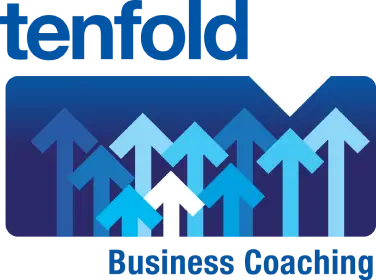AI for Electricians: Avoid These 5 Mistakes With Cash Flow in your Electrical Contracting Business
Managing rapid growth in an electrical contracting business presents both excitement and financial challenges. In my original article on avoiding cash flow mistakes in your electrical contracting business, I outlined five mistakes that can hinder expansion and threaten stability. This follow-up demonstrates how you can use the free version of ChatGPT to convert those strategic insights into straightforward daily tasks.
I’m Ashley Thomson, a business engineer and electrical business coach with over twenty years of experience working in the industry. I hold a Master of Entrepreneurship and Innovation, a Graduate Diploma of Business Management, and a Bachelor of Engineering with Honours. Throughout my career, I have supported trade businesses through periods of growth and change, and I was proud to be inducted into the Coaching Hall of Fame in 2019. My aim is to help you understand how to incorporate artificial intelligence into your electrical business in simple, practical ways that you can easily apply.
Ignoring Cash Flow Forecasting
When you fail to project your income and expenses at least three months in advance, you leave your business vulnerable to unexpected surprises. Seasonal fluctuations in demand or sudden repairs to equipment can wipe out a week’s profits before you even notice. I always recommend implementing a rolling forecast so you can identify potential shortfalls early and make the necessary adjustments to your plans.
Here are some ChatGPT prompts for cashflow forecasting:
- “Generate a simple three-month cash flow forecast template for an electrical contracting business, with columns for materials, labour and overheads.”
- “Analyse potential seasonal revenue dips for an electrical contractor in (my service area) and suggest planning actions to help smooth out shortfalls.”
- “Write a weekly checklist of questions to update cash flow projections based on actual invoices and receipts.”
- “Explain best-practice steps for maintaining a rolling forecast using spreadsheets and manual data entry.”
This approach keeps you proactive rather than reactive to cash-flow challenges.
Poor Invoicing Practices
Late invoicing and passive follow-up on payments basically means that you’re financing your clients’ work. You’re effectively giving them a line of credit without earning any interest.
To keep a steady cash flow, I coach my clients to send out invoices within 24 hours of completing a job. The next step in the process is to follow up politely but persistently on any outstanding amounts to ensure they are paid on time.
Here are some ChatGPT prompts for collecting payments:
- “Draft a friendly invoice reminder email for a commercial client who is ten days overdue.”
- “Write payment terms that balance firmness and professionalism for an electrical contracting service invoice.”
- “Create a follow-up schedule with suggested wording for chasing late payments over thirty, sixty and ninety days.”
- “Provide a list of subject lines for invoice reminder emails that prompt quick responses from clients.”
Instead of struggling with wording every time, copy these templates into your email client and send them without delay.
Overlooking Profit Margins
Rising material costs and labour rates can quietly eat into your profit margins if you do not regularly review your pricing structure. I have seen many Australian businesses continue to quote their old rates long after their costs have increased, which means they are losing vital profits on every job. It’s important to keep an eye on your costs and adjust your prices accordingly to ensure your business remains profitable.
You can use ChatGPT as a pricing consultant with these prompts:
- “Explain how to calculate profit margin for an electrical installation job that costs five thousand dollars in materials and three thousand dollars in labour”
- “Suggest ways to communicate a five per cent price increase to long-standing residential clients”
- “List three checks to ensure my current hourly rate factors in overheads, profit and a contingency buffer”
- “Generate a short analysis showing how material cost increases affect overall project profitability”
Within minutes, you will have a clear understanding of where your profit margins stand and how to update your quotations confidently and without confusion.
Relying Too Heavily on One Client
When your revenue depends heavily on a single large client, a delay in payment or a cancellation of a contract can leave you scrambling to manage your cash flow. I provide coaching to electricians across Australia to help them balance their commercial, residential, and maintenance work. This approach ensures that a downturn in one sector does not threaten their overall financial stability.
Use ChatGPT to brainstorm and refine diversification strategies with prompts like these:
- “Suggest five residential services that an electrical contractor in Australia could offer to improve diversification”
- “Write an introduction email to a local property manager outlining my electrical maintenance services”
- “Identify three marketing channels that are ideal for reaching small commercial clients in Brisbane and other parts of Queensland”
- “Create a questionnaire to qualify potential new clients and ensure they match my target client profile”
By exploring and mapping out new revenue streams, you will protect your business from becoming overly dependent on any single customer or group of customers.
Not Setting Aside Emergency Funds
Unexpected expenses, such as repairs to your generator or personal medical bills, can quickly use up your operating cash if you do not have a financial buffer in place. I always make a point of setting aside some of my revenue into a separate account, making sure that urgent costs can be covered without disrupting the daily running of the business.
ChatGPT can build and maintain that safety net with these prompts:
- “Help me calculate an appropriate emergency fund target equal to three months of average expenses for my electrical business”
- “Write a plan to set aside ten per cent of each invoice into a separate savings account”
- “Explain how to track my emergency savings manually and update the balance weekly”
- “Provide a monthly schedule of reminders and messages to ensure I stay on track with my emergency fund goal”
These simple prompts make saving money a routine business habit rather than something you do only occasionally.
Take Control of Your Cash Flow Today with an Electrical Business Coach
If you are ready to incorporate these five strategies into your daily routine and build long-lasting financial resilience, get in touch for specialised support. Tenfold Business Coaching offers customised business coaching that is specifically tailored for electricians and artificial intelligence solutions for electrical contractors, so you can confidently implement these techniques. Contact Tenfold Business Coaching today to schedule a discovery session, and let us help you improve your cash flow management, adopt smarter pricing strategies, and achieve balanced business growth.






